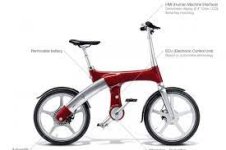classicalgas
100 W
- Joined
- May 14, 2016
- Messages
- 138
Not a fly by night scheme, from what I can tell...https://electrek.co/2021/08/31/radical-new-electric-bike-drive-systems-requires-no-chains-or-belts-entirely-ride-by-wire/
The company is claiming only 5% less drive efficiency than a chain. I wonder if that's a brand new, clean and properly lubed chain (ideal world) or a well used and dirty one (real world)
Seems to me that installed in a tadpole trike (long chain) you might not have much weight penalty, and you could maintain a steady cadence regardless off terrain (or stopped ) both would help with the drive efficiency penalty. Thoughts?
The company is claiming only 5% less drive efficiency than a chain. I wonder if that's a brand new, clean and properly lubed chain (ideal world) or a well used and dirty one (real world)
Seems to me that installed in a tadpole trike (long chain) you might not have much weight penalty, and you could maintain a steady cadence regardless off terrain (or stopped ) both would help with the drive efficiency penalty. Thoughts?


